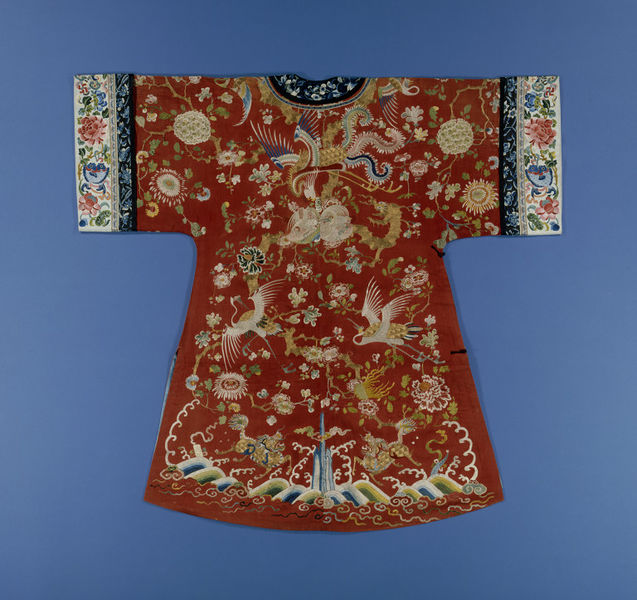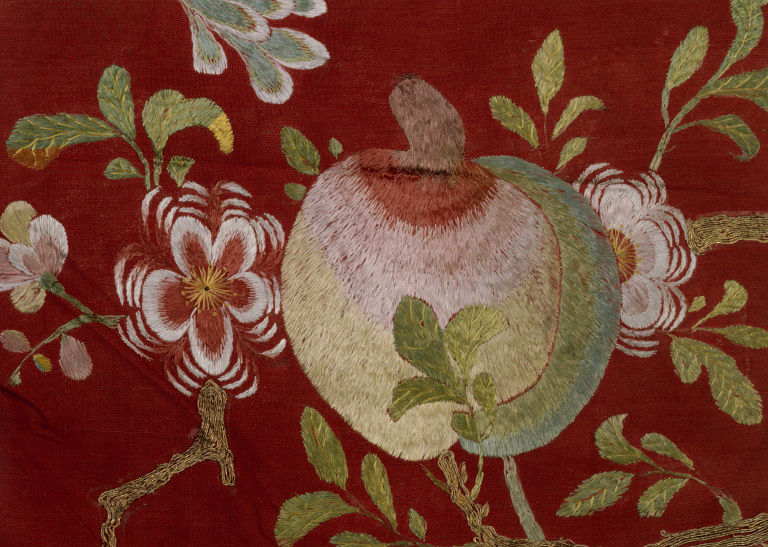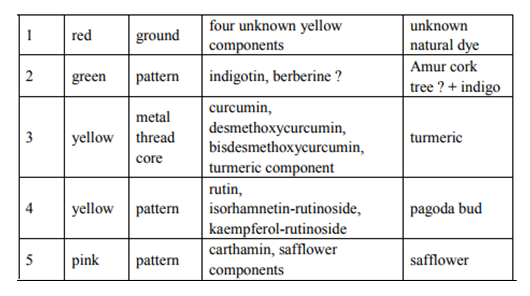Difference between revisions of "V&A T.184-1948, Embroidery on gauze-banded plain weave silk robe, China (late 17th century-18th century)"
Jump to navigation
Jump to search
| Line 11: | Line 11: | ||
== Summary of results == | == Summary of results == | ||
| − | [[File:VA result.PNG|center|frame|Analytical results]] | + | [[File:VA result.PNG|center|frame|Analytical results by Jing Han [2]]] |
| − | Traditionally used Chinese dyes, pagoda tree buds, | + | Traditionally used Chinese dyes, pagoda tree buds, turmeric and safflower had been identified as the dyeing sources of this Chinese woman's robe [2]. |
== HPLC profile == | == HPLC profile == | ||
Revision as of 09:09, 4 August 2017
Artifact Information
The robe is made of gauze-banded plain weave silk with embroidery. This robe is a woman's garment that may be the earliest non-ecclesiastical Chinese garment in the Museum. The grand is a rich red silk that has horizontal bands of fruiting pomegranates (symbolizing a woman with many kids) in gauze weave running across the fabric at widely spaced intervals. Over this, there is shiny embroidered decoration of fruits, flowers, birds and mythical beasts [1].
Victoria and Albert Museum, London, UK T.184-1948
Summary of results
Traditionally used Chinese dyes, pagoda tree buds, turmeric and safflower had been identified as the dyeing sources of this Chinese woman's robe [2].
HPLC profile
Identified compounds
References
[1] https://collections.vam.ac.uk/item/O72026/robe-unknown/ [2]



